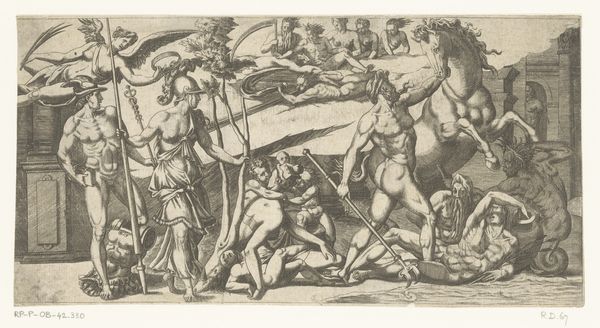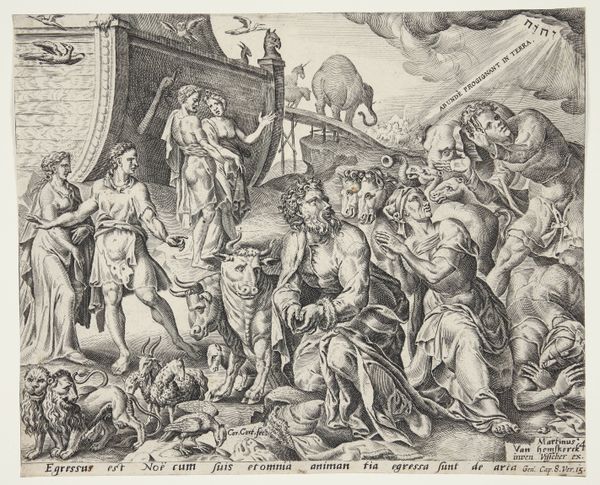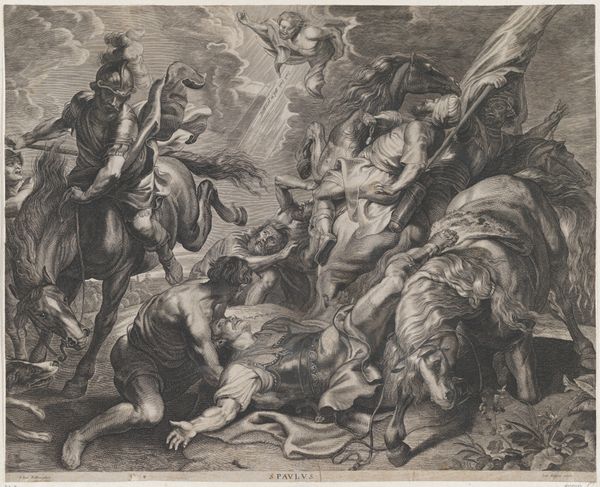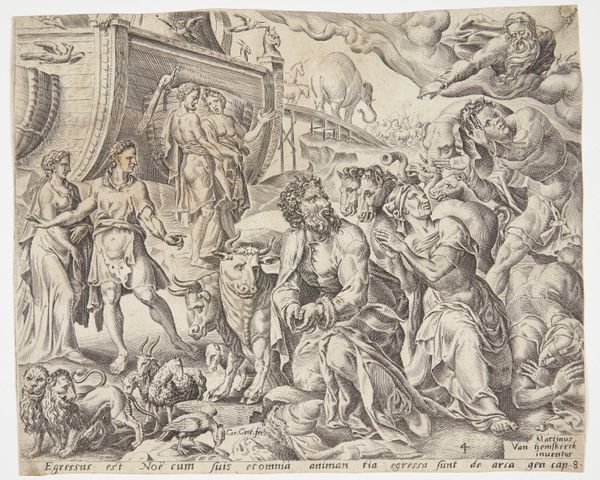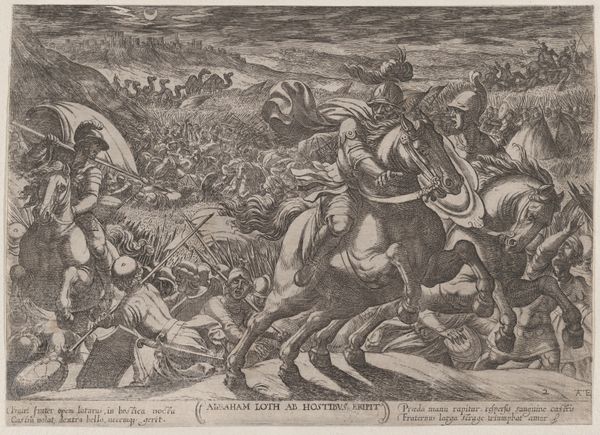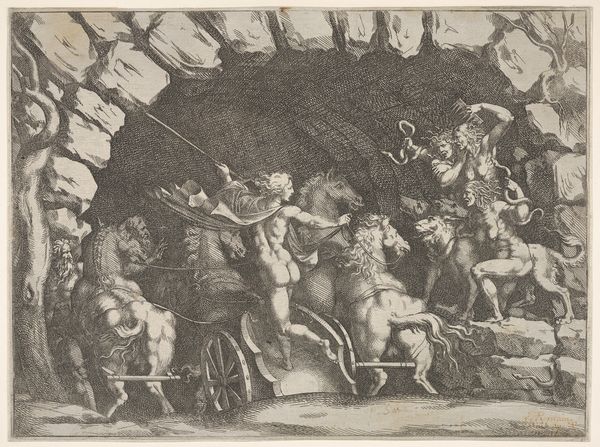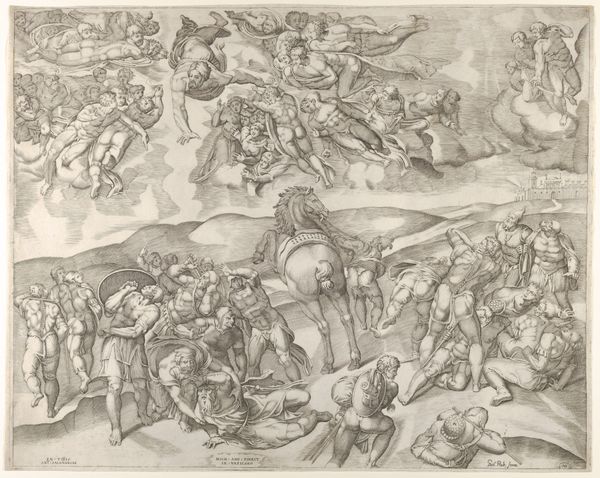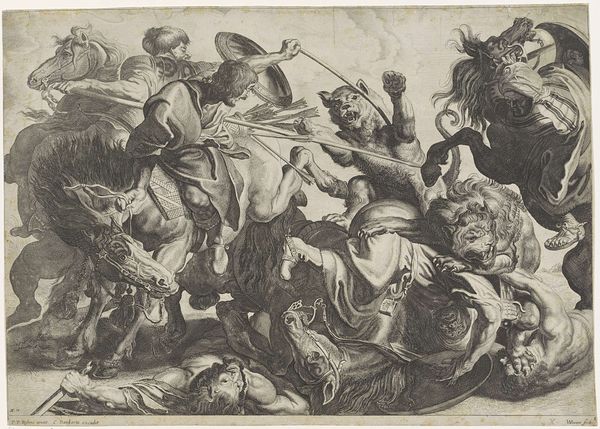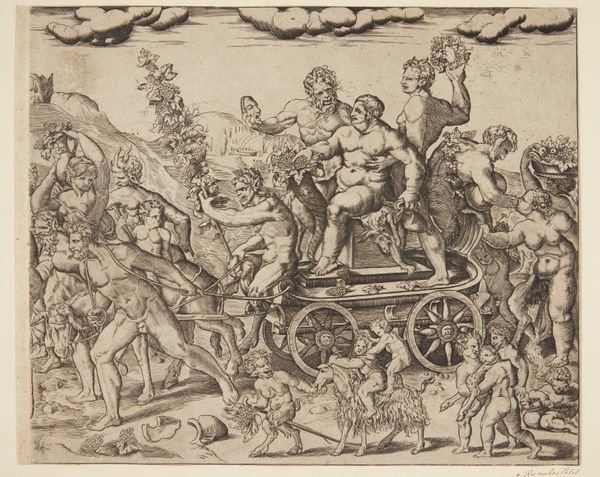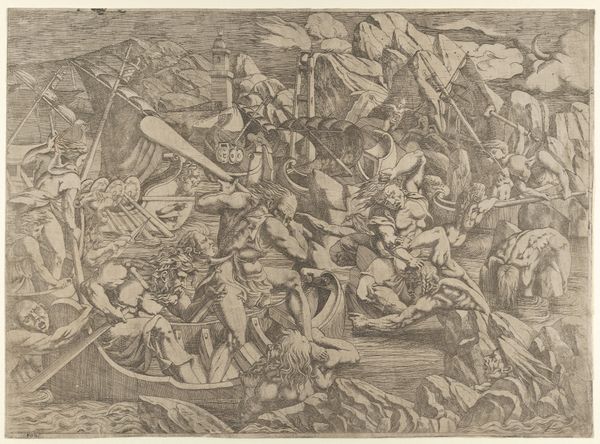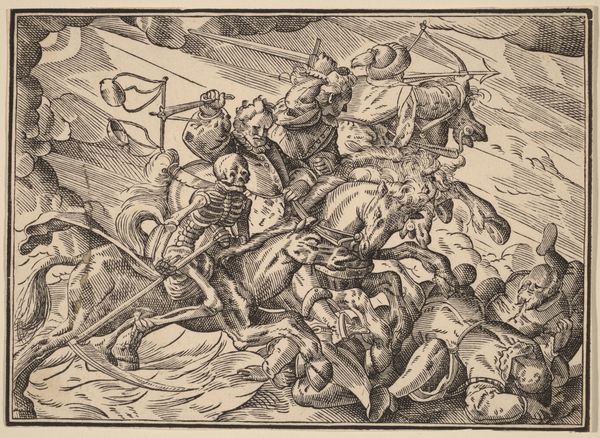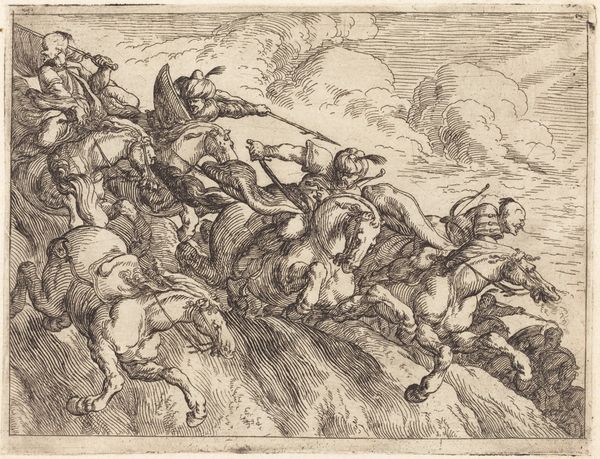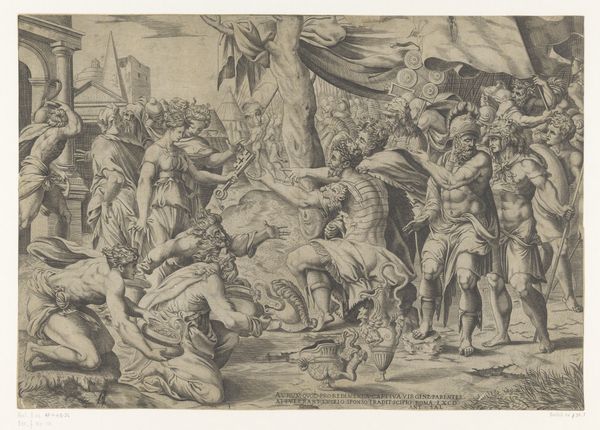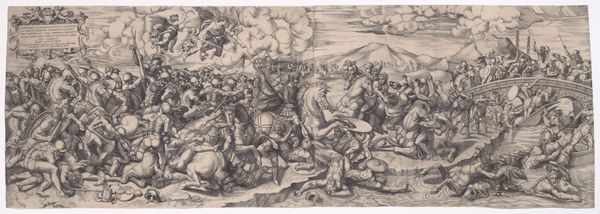
drawing, print, paper, ink, engraving
#
drawing
#
ink drawing
#
allegory
#
pen drawing
# print
#
mannerism
#
figuration
#
paper
#
11_renaissance
#
ink
#
geometric
#
pen-ink sketch
#
history-painting
#
engraving
Dimensions: 415 × 672 mm
Copyright: Public Domain
Curator: This is Geronima Cagnaccia Parasole’s “Battle of the Lapiths and Centaurs,” made around 1600, rendered in ink on paper and produced as a print. Editor: It's so dynamic! I'm immediately drawn to the frenetic energy and dense composition. The image feels so full and busy, created through pen and ink – but I am wondering about its original intent as a print, because it could be scaled, disseminated, collected and distributed by a large audience. What is your take? Curator: Excellent observation about its production as a print! Let's consider the materiality. The ink, the paper, the tools used to create the engraving – these were all commodities, circulated and valued within a specific economic system. This print exists not only as an artistic creation but also as a product of labor. Who was she designing for and who was in control of the marketplace that drove that commission? Editor: That’s really interesting. So, rather than just seeing it as a depiction of a classical myth, we should think about who profited from this image’s creation? Was it her or the person distributing her artwork to the world? How might gender impact those dynamics? Curator: Exactly. The “Battle of the Lapiths and Centaurs,” became a commodity subject to the demands and fluctuations of the art market. Parasole’s artistic labor resulted in a product intended for consumption. Consider the engraving technique – a craft demanding skill and time. Where does this craft fit within the hierarchy of art? Is it "lesser" because it's reproducible? Does her access to these tools impact her style or subject matter? Editor: This definitely reframes how I see the piece. It's not just about the myth anymore, but also about Parasole's place as a working artist within the economic and social structures of her time. Now that makes me wonder: who were her teachers and colleagues in this highly competitive art world? Curator: Precisely. Considering the material conditions and the artist’s role within those conditions can lead to deeper, more nuanced understanding of even the most seemingly traditional subjects. Editor: I'll never look at prints the same way again. Thank you!
Comments
No comments
Be the first to comment and join the conversation on the ultimate creative platform.
